?width=1920&height=1600)
Ferrari 360 Modena
The 360 Modena is a clean-sheet design which anticipates trends for future Ferrari road cars. These include lower weight combined with greater chassis rigidity – seemingly contrasting objectives that have been achieved by employing innovative construction technology.

Entirely in aluminium
The 360 Modena is the first production Ferrari to be constructed entirely in aluminium. Chassis, bodyshell and suspension wishbones are all made from this light-weight material, allowing the engineers to provide the best overall performance and handling ever achieved in a mid-engined Ferrari, along with levels of comfort unheard of before.
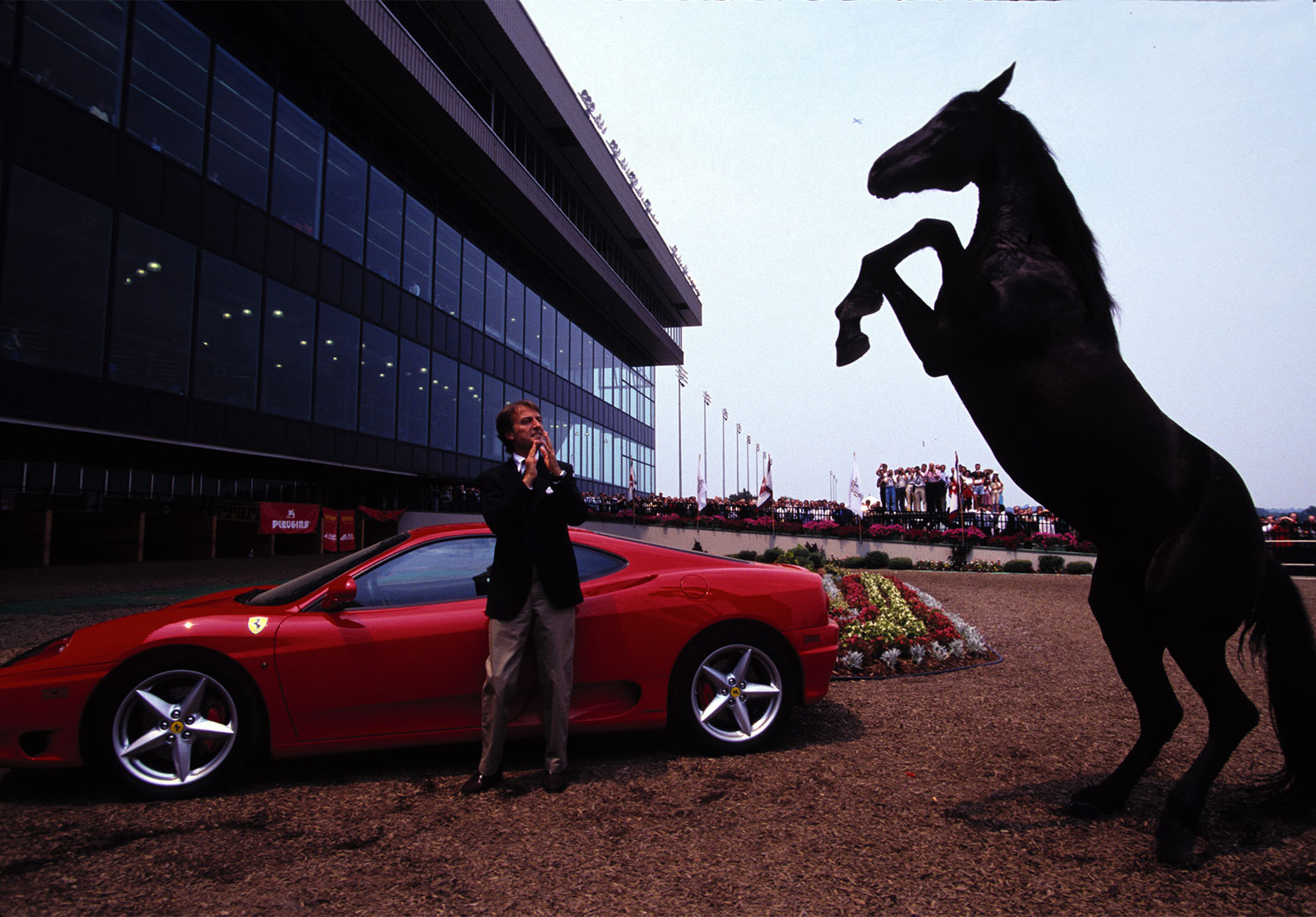
The 360 Modena, was announced at the 1999 Geneva Salon, to replace the beloved F355 range that had enjoyed a five year production run with no cosmetic changes during its lifespan.
After the charismatic beauty of the F355, the 360 Modena was a radical departure from Ferrari classicism, as gone was the central egg crate “radiator” grille.
This had been a Ferrari feature from what seemed like time immemorial, even if it had only been a dummy on some models like the Testarossa, 348 and the F355.
Aerodynamic considerations played a major part in the design of the 360 Modena, thus the front featured twin radiator inlet grilles, one either side, allowing airflow to pass under the raised centre section to feed via the flat bottom to the twin rear diffuser section, increasing downforce as the car’s speed rises.
The design featured some retro details, like the engine compartment intakes in the rear wings that hinted of 250 LM and the Dino, plus the traditional paired rear light treatment, but overall it was a high technology car for the new millennium, bristling with innovative details.
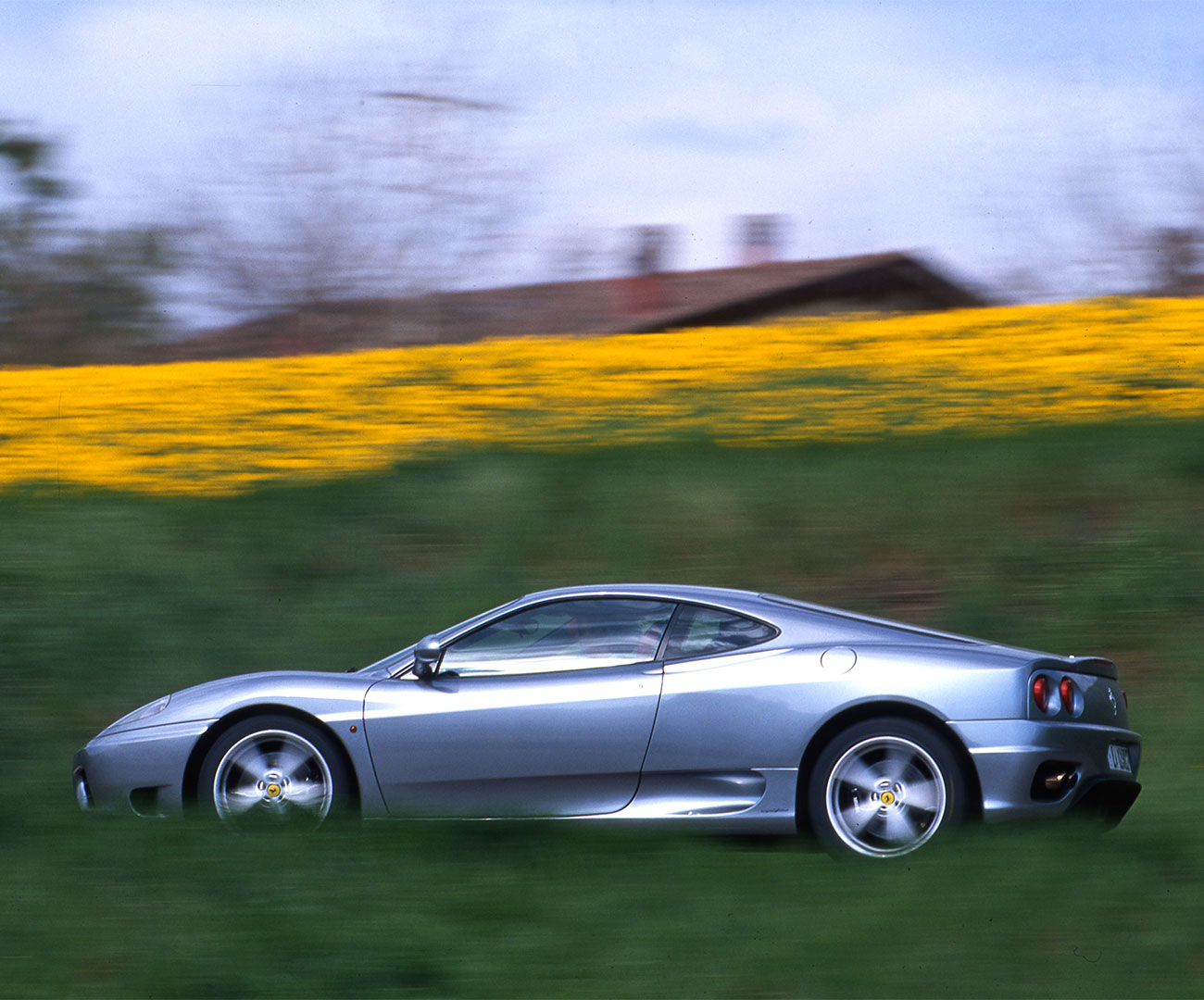
The 360 Modena was the first Ferrari road car to feature a full aluminium monocoque chassis, which was developed in conjunction with Alcoa. The chassis was constructed from varying section aluminium extrusions, welded together via twelve aluminium nodes.
This construction provided 40% greater rigidity and a 28% weight saving compared to the F355 model which it replaced, despite being dimensionally 10% larger overall. The chassis had factory type reference F 131 AB M, for the manual gearbox car, and F 131 AB E for the version with the F1 gearshift assembly.
In simplistic terms, the design brief for the new car was basically to do everything that the F355 did already, but to do it better, with less weight, more interior space, greater comfort and superior performance.
All these objectives were achieved, primarily through the almost exclusive use of aluminium and alloys in its construction. As already mentioned, the complete monocoque chassis unit was aluminium, as was the bodywork, with various aluminium alloys being used for the engine castings, transmission casings and the suspension components.

The lightweight aluminium alloy body panels are riveted to the chassis frame. The quality of the aluminium castings from the Ferrari foundry is legendary, and to enjoy these one only has to peer through the rear screen of a 360 Modena. Here the engine is open to view, and one can admire the red crackle paint finished intake plenums with the Ferrari script in relief, bridged by a plain alloy casting carrying the “Cavallino Rampante”.
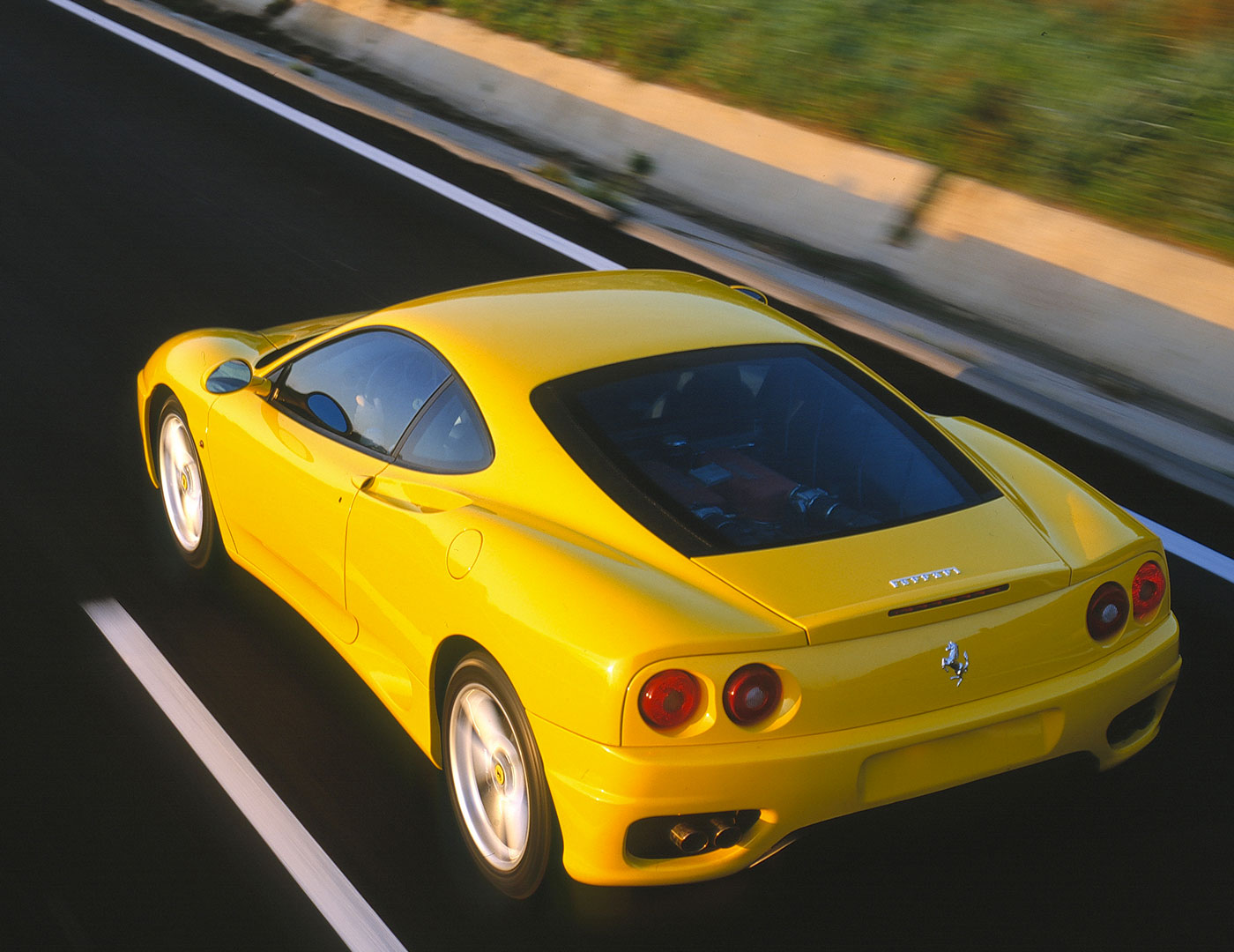
?width=1920&height=1080)
The design
The chassis had a 2600mm wheelbase, which was 100mm greater than the concurrent front engine V12 550 Maranello model, and 150mm more than the succeeded F355, with a front track of 1679mm and rear track of 1617mm, both of which figures are also greater than the models already mentioned. All were numbered in the continuous chassis number road car sequence, in the range from 104376 to 136686.
The model was available in right or left hand drive form, with power assisted steering as standard.
The standard road wheels were stylised versions of the traditional five spoke “star” alloy design, featuring slim ridged convex spokes and five bolt fixing with 18″ diameter rims, 7.5″ wide at the front and 10″ wide at the rear. Independent suspension was provided all round with front and rear anti roll bars, the one at the rear running within the chassis frame.
The suspension and braking systems were fitted with a Bosch 5.3 ABS/ASR system very similar in concept to that used on the concurrent 550 Maranello. This provided either “normal” or “sport” mode, or could be switched off completely, dependant upon the driver’s wishes.

When in “normal” mode the “brain” placed an emphasis on stability relative to road conditions, reducing power to the driven wheels via the engine management system, or bringing the ABS braking system into play, to maximise traction. When in “sport” mode the “brain” provided wider parameters before the system came into effect, placing greater emphasis on the driver’s input.
The continuously adjusting dampers were manufactured in aluminium by Sachs, to provide CDC (Continuous Damper Control) via an electronic “brain” that monitored various factions, like steering angle, road speed, braking effect or acceleration, to optimise the settings for the driving conditions.
The ABS braking system integrated with the ASR drive control system actuated a ventilated and cross drilled disc brake on each wheel, each disc having a four piston light alloy calliper.
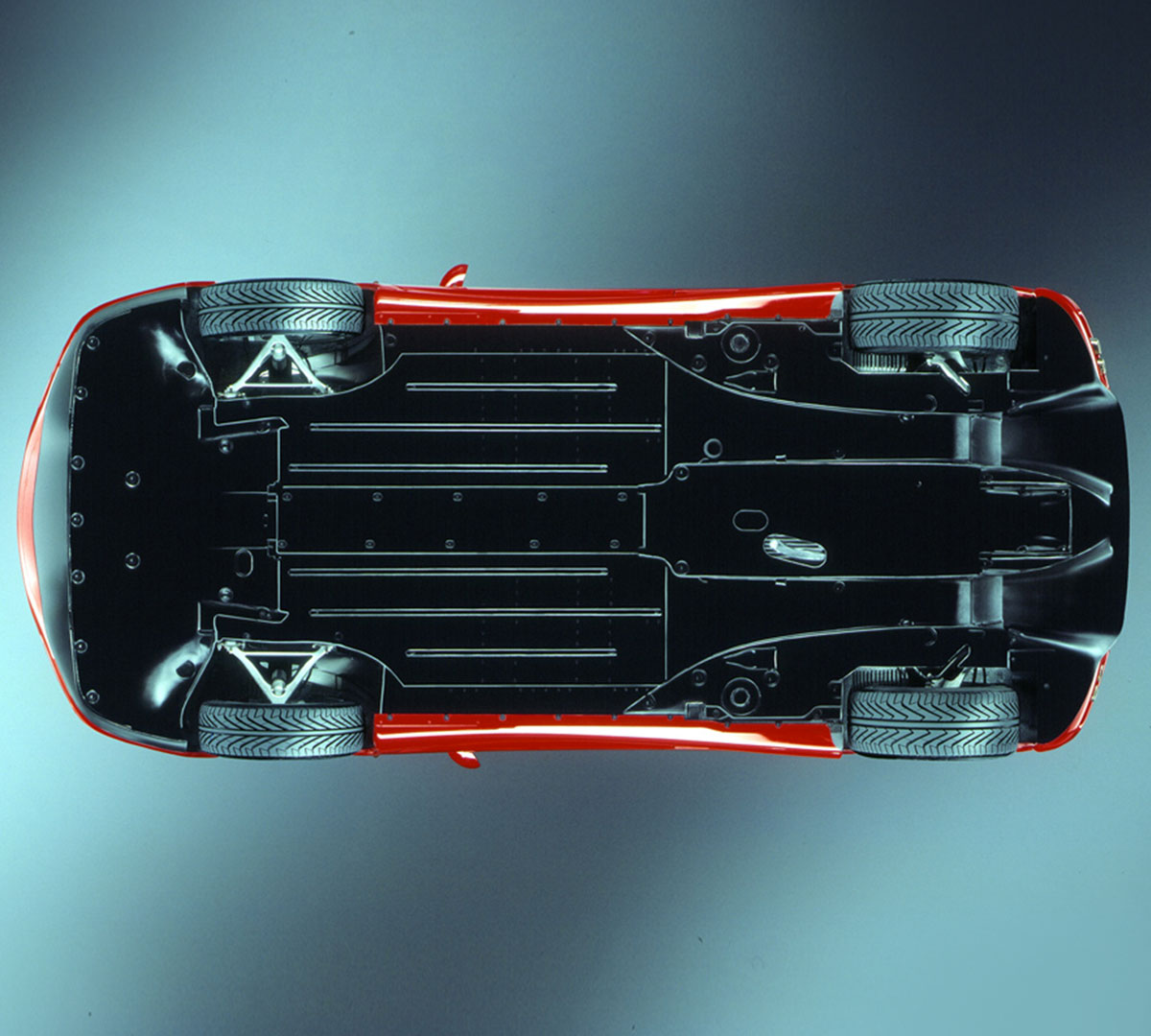
The interior was upholstered in leather as standard, with electronic adjustment facilities for the seats available as an option, with a luggage void behind them capable of housing a set of golf clubs, or a pair of slim suitcases. The occupants were reminded of the emphasis of aluminium in the construction, with aluminium panels covering part of the centre console, the lower door panels and the face of the instrument binnacle.
Twin airbags were provided, as was air conditioning, electric windows and door mirrors, plus a stereo system with an optional CD player. As an option sports seats were available, along with a range of items from the “Carrozzeria Scaglietti” personalisation accessory range specific to the model.

The 25 August 1999 issue of “Autocar” magazine featured a road test of an example with the F1 gearbox, where they recorded a 0-60 mph time of 4.2 seconds, and a 0-100 mph time of 8.8 seconds, quoting the manufacturer’s claimed top speed of 184 mph.
In their Road Test Yearbook that formed part of their final issue of the twentieth century, they pronounced it “the world’s best sports car”, quite an accolade to carry into the new millennium.


The engine
The engine was a derivation of that designed for the F355 with a small increase in cubic capacity to 3.6 litres, hence the 360 model designation. The longitudinally mid mounted 90 degree V8 engine had an actual cubic capacity of 3586cc, with a bore and stroke of 85mm x 79mm, five valves per cylinder, twin overhead camshafts per bank, and dry sump lubrication. The block, cylinder heads, sump, and sundry castings were constructed from light alloy, featuring Nicasil treated alloy cylinder liners, and titanium alloy con rods.

A Bosch Motronic ME 7.3 combined fuel injection/ignition engine management system was fitted, featuring a “fly by wire” throttle system, and a variable back pressure exhaust system, to provide a claimed power output of 400bhp, which equates to 112 bhp/litre, driving through a six speed plus reverse transmission in unit with the engine.
The gearbox was available with standard manual control via the traditional lever in the open gate, or an upgraded and more sophisticated version of the “F1″ system introduced on the F355 model, with “up” and “down” gear change paddles mounted on the steering column.
One of the advances of the revised system was that on sensing an input from the driver on either paddle, the throttle opening was adjusted accordingly during the change process to automatically smooth out the gear change.
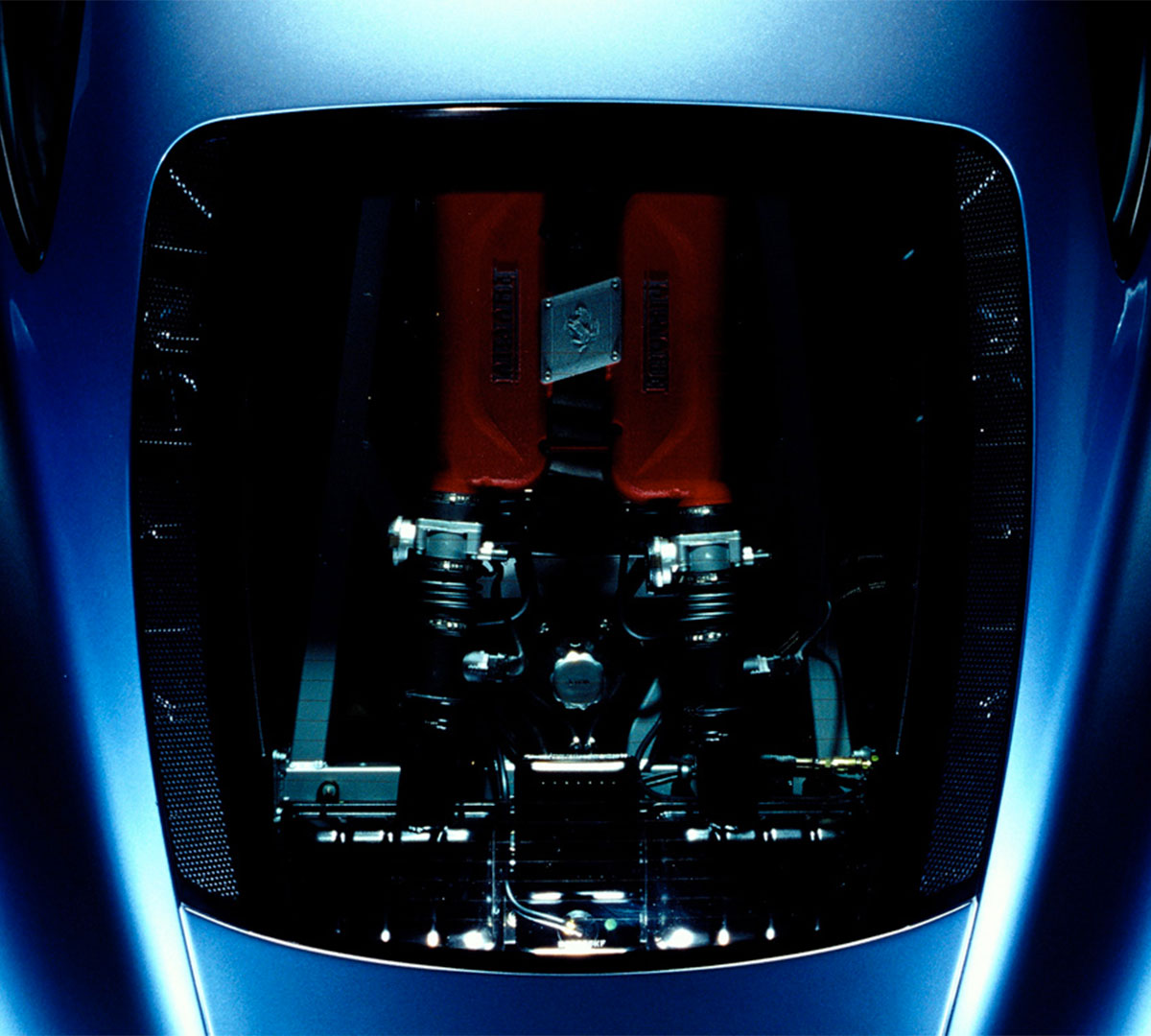
- V8ENGINE
- 3586.20 ccTOTAL DISPLACEMENT
- 294 kWMAXIMUM POWER @ 8500 rpm
- over 295 km/hTOP SPEED
- Typerear, longitudinal 90° V8
- Bore/stroke85 x 79mm
- Unitary displacement448.29cc
- Total displacement3586.20cc
- Compression ratio11 : 1
- Maximum power294 kW (400 hp) at 8500 rpm
- Power per litre112hp/l
- Maximum torque373 Nm (38 kgm) at 4750 rpm
- Valve actuationtwin overhead camshafts per bank, five valves per cylinder
- Fuel feedBosch Motronic ME7.3 electronic injection
- IgnitionBosch Motronic ME7.3 static electronic, single spark plug per cylinder
- Lubricationdry sump
- Clutchsingle-plate
- Framealuminium spaceframe
- Front suspensionindependent, unequal-length wishbones, coil springs over telescopic shock absorbers, anti-roll bar
- Rear suspensionindependent, unequal-length wishbones, coil springs over telescopic shock absorbers, anti-roll bar
- Brakesdiscs
- Transmissionmanual or electro-hydraulic F1 6-speed + reverse
- Steeringrack-and-pinion
- Fuel tankcapacity 95litres
- Front tyres215/45 ZR 18
- Rear tyres275/40 ZR 18
- Typetwo-seater berlinetta
- Length4477mm
- Width1922mm
- Height1214mm
- Wheelbase2600mm
- Front track1669mm
- Rear track1617mm
- Weight1290kg (dry)
- Top speedover 295km/h
- Acceleration 0-100 km/h4.5sec
- 0-400 m12.6sec
- 0-1000 m22.9sec
- Urban test cycle ECE (Version "Euro 2")28,0 l/100km
- Extra urban test cycle EUDC (Version "Euro 2")12,0 l/100km
- Consumption ECE+EUDC (Version "Euro 2")17,9 l/100km
- CO2 emissions combined (Version "Euro 2")415g/km
- history
- design
- engine
- Technical Details
- Media gallery